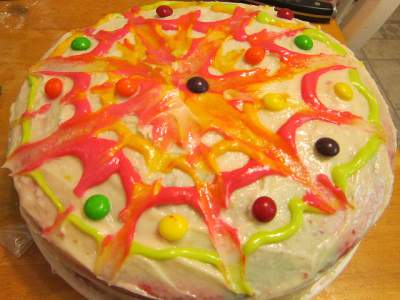
Food manufacturers use coloring to allure their customers and to increase the shelf-life of their products. You can’t make the food look delicious without these dyes, but ingredients in it may irritate your immune system and trigger allergic reaction.
Food and Drug Administration conducts test before approving food color dyes in the market, which include red dye No. 2, 3 & 40, yellow dye No. 5 & 6, blue dye No. 1 & 2. (1) Food colors derived from natural vegetables and fruits are exempt for this test. Only artificial dye need to undergo the standards to mark it as safe.
However, in few sensitive kids irritants in these dyes (natural and artificial) can stimulate allergic reaction. Food manufacturers use these colors to preserve the food, hold the nutritional values and to control pH level. But, when substances in these dyes come in contact with immune system of your child, reaction triggers.
The chemical reaction between histamines and external irritants results in allergic symptoms, which include nasal congestion, runny nose, watery eyes, rashes over skin, vomiting, abdominal pain, nausea and drowsiness. Interestingly, signs of the reaction are similar to food intolerance. So, in 1999 Scott Sicherer based on an article said it’s difficult to diagnose allergy to food dyes. For this reason, food coloring allergy will be called food intolerance.
Though there are few similarities between allergy and intolerance, they are completely different. Allergy involves immune system, whereas intolerance affects digestive system.
Whatever the sign, your children will suffer from having food coloring. Consult the doctor as soon as your child experiences any abnormal signs. Only after diagnosis physician can confirm if it’s an allergy or intolerance.
To prevent allergy, it’s recommended to avoid having foods that include artificial coloring. Yes, it’s difficult to distinguish safe food colors. As every product is now made with dyes. Experts recommend opting for the food which is near to natural origin. Serve your child vegetables, fruits and other natural foods.
Check the list of foods with yellow dye, red dye and blue dye before purchasing.

